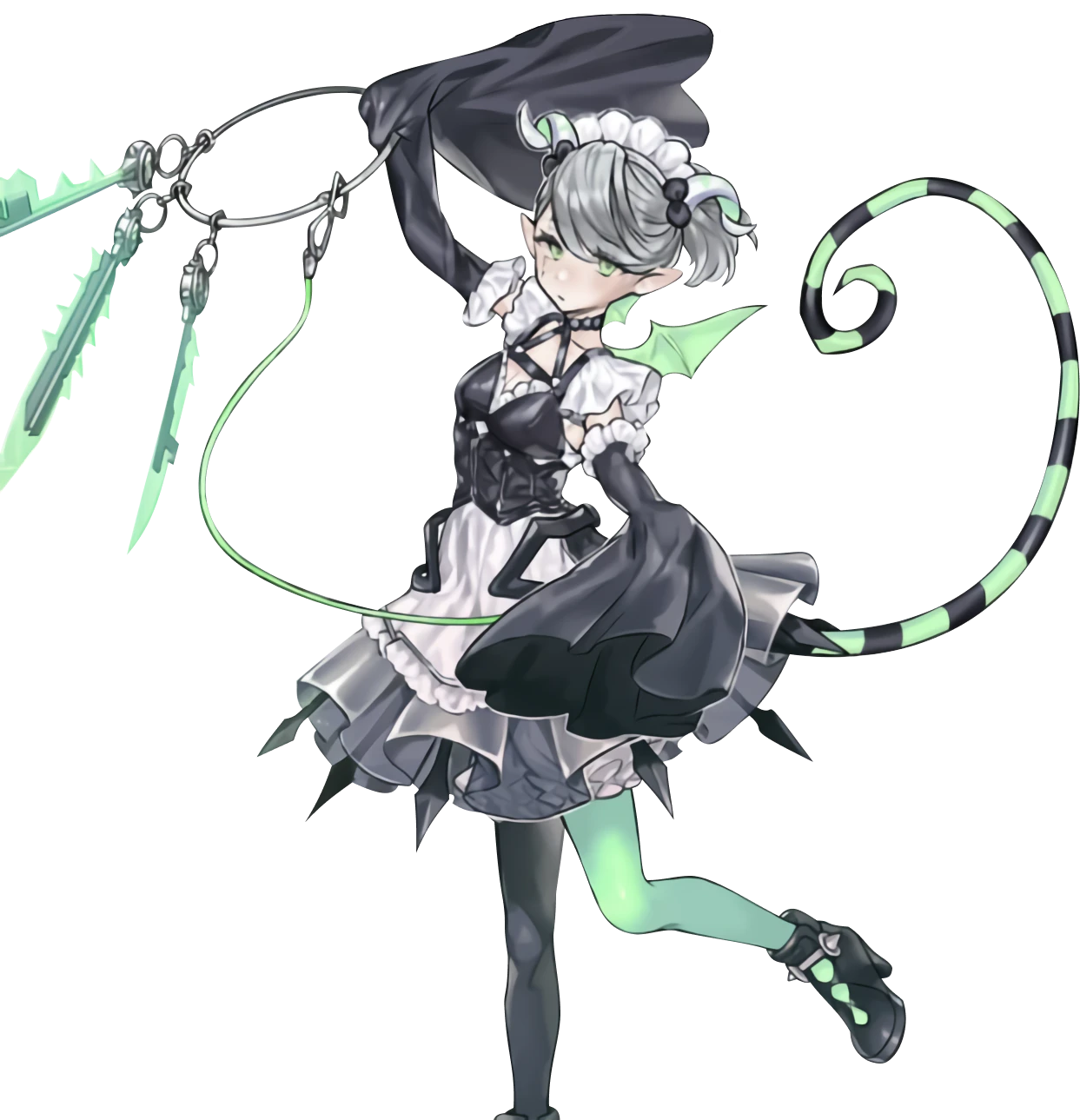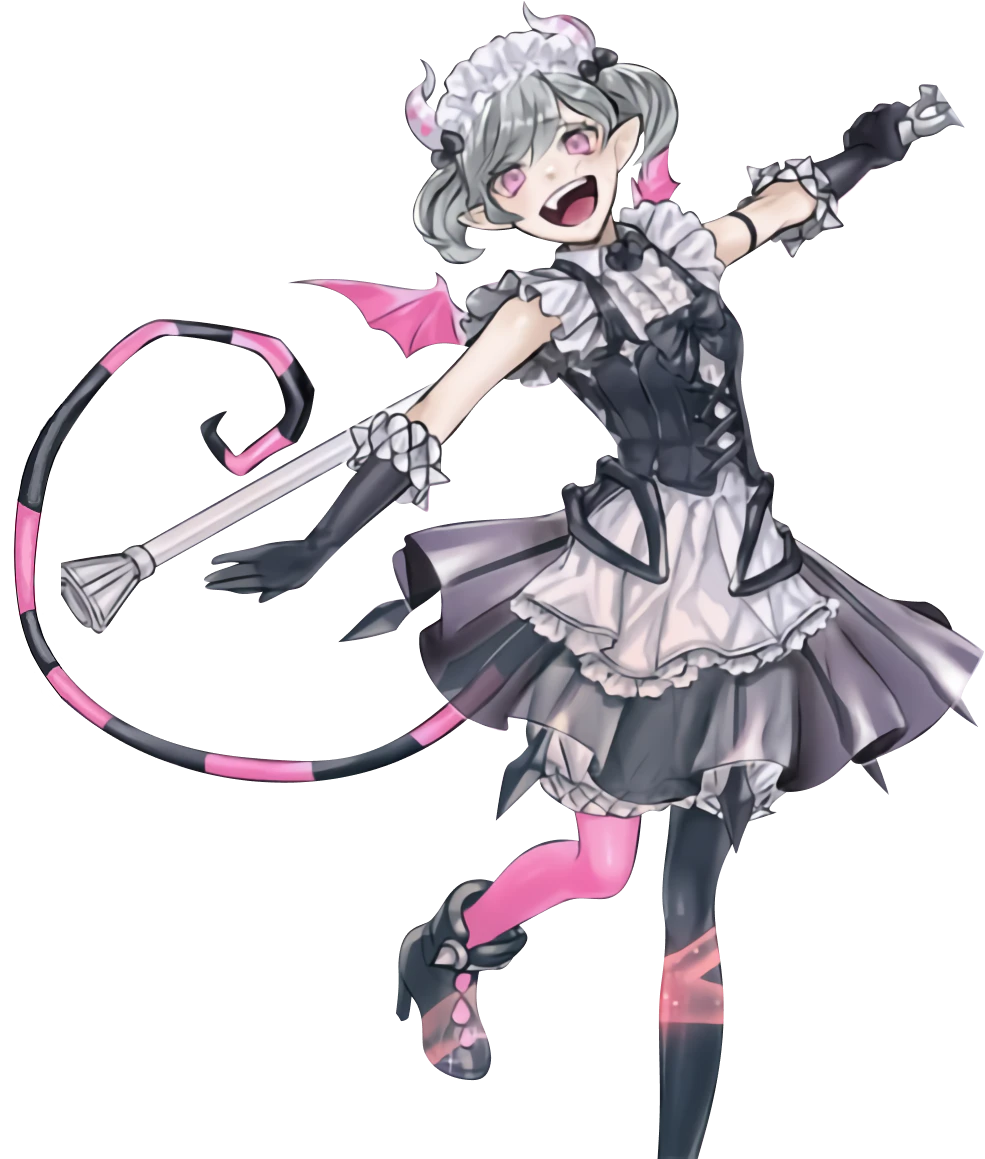Normal Traps
This list currently only covers commonly used normal traps. Please check back in the future to see more niche and promising traps.
The floodgate and miscellaneous sections currently do not feature a detailed breakdown, only a overview over the common ones with a short evaluation. Please check back in the future to read their full breakdowns.
There are various important factors when it comes to choosing the traps you want to play:
- Do they trigger the Labrynth Loop? It doesn’t help when you only have insanely strong floodgate traps, when you never get your engine going
- Are they easy to activate? Traps with weird activation requirements usually are just not worth bothering with
- It can also be relevant in some cases that you simply can activate a trap in order to trigger Lady Labrynth of the Silver Castle, tho this is usually a consideration for when you are side decking and can’t side in enough good cards for all the dead ones you wish to take out.
- If they are removal traps, how many cards to they trade for? Card advantage is one of the most important things when playing Labrynth, and that pattern continues with the traps. The best traps are commonly those that don’t just remove a card from the field, but either remove multiple or have other good benefits to them.
- If they are not removal traps, how impactful are they really? This is mainly aimed at floodgates and cards like Destructive Daruma Karma Cannon and Transaction Rollback. Many of the floodgates only useful in specific match ups, making it very format dependant on if you should main deck them, or even run them at all.
Removal
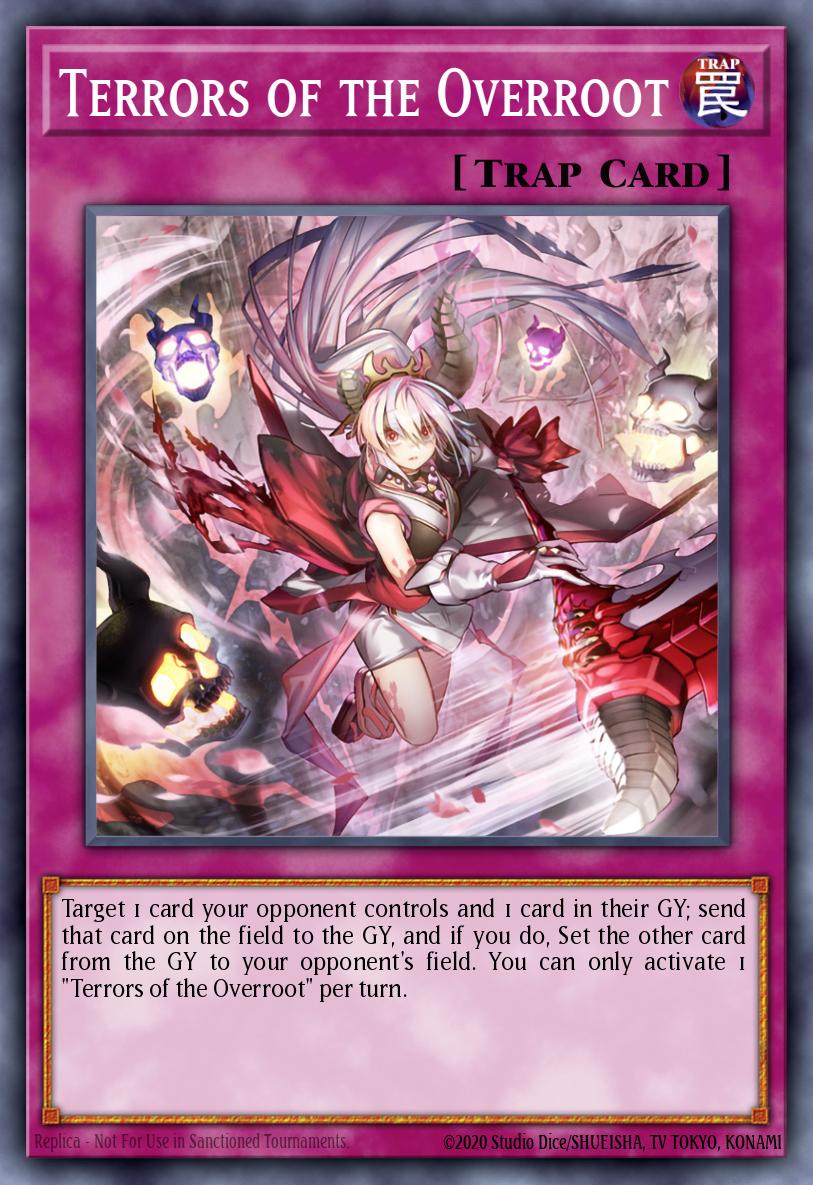
Target 1 card your opponent controls and 1 card in their GY; send that card on the field to the GY, and if you do, Set the other card from the GY to your opponent's field. You can only activate 1 "Terrors of the Overroot" per turn.
Non-destruction (Send) targeting removal for any card (not just monsters).
Allows you to block specific zones, which can make certain matchups very easy:
- Pendulum Zones against Pendulum Decks.
- Set a monster vs Sky Striker, if they don’t have something like Dark Hole they are locked out of their spells.
Requires a card in the opponent’s graveyard, preferably one that does not help the opponent.
The effect of this card is sequential, it first sends and then sets the card. This means that you still send the card from the field if the target in the Graveyard is not there anymore during resolve.
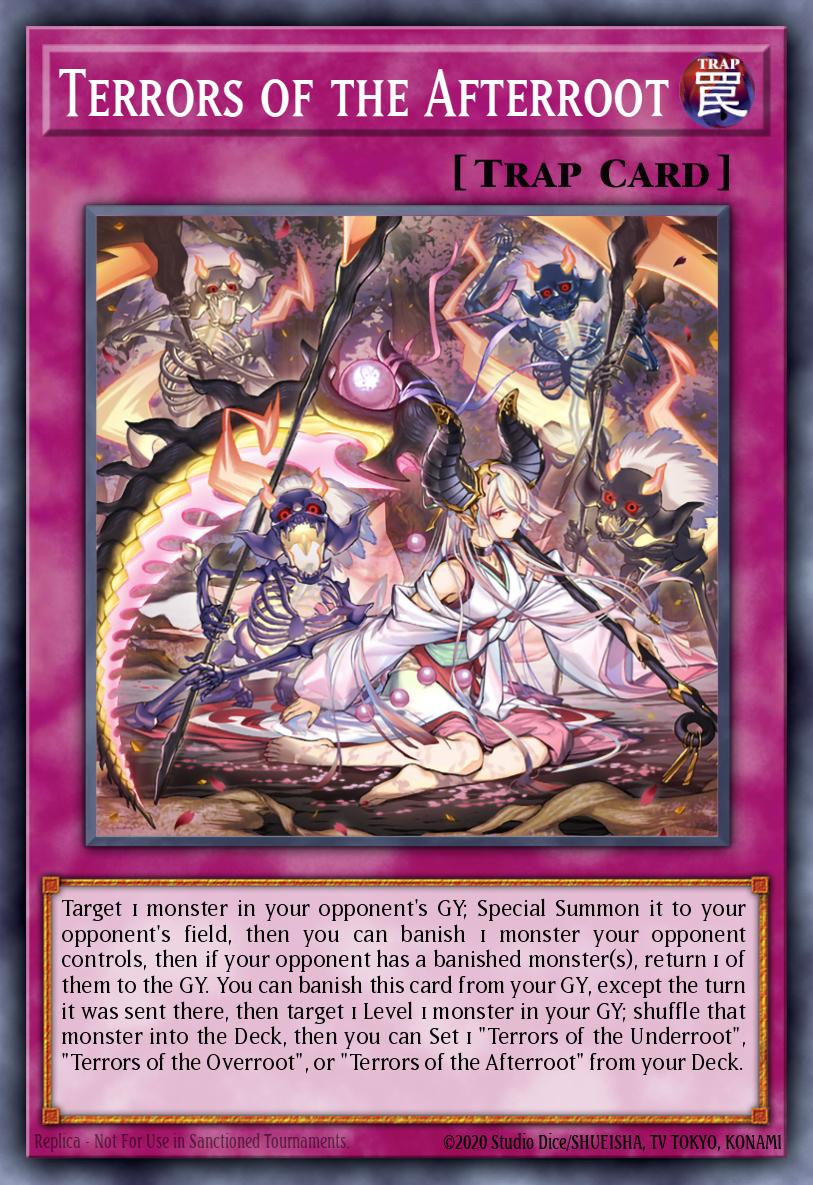
Target 1 monster in your opponent's GY; Special Summon it to your opponent's field, then you can banish 1 monster your opponent controls, then if your opponent has a banished monster(s), return 1 of them to the GY. You can banish this card from your GY, except the turn it was sent there, then target 1 Level 1 monster in your GY; shuffle that monster into the Deck, then you can Set 1 "Terrors of the Underroot", "Terrors of the Overroot", or "Terrors of the Afterroot" from your Deck.
Graveyard Disruption (targeting)
Non-destruction (banish) non-targeting (on-field; targets in GY) removal for opponents monster
Banishment Disruption
Banish to get another
Terrors of -roottrap, BUT requires a level 1 to shuffle back, which the deck lacks. The only targets this deck potentially plays are clock (which you only would want to shuffle back a 2nd copy of), backjack (which you do not want to shuffle back) and handtraps (which are highly meta dependant: veiler, droll, crow)Requires a monster in the opponent’s graveyard, preferably one that does not help the opponent.
Finding a monster that does not help your opponent is very hard, as unlike Overroot this card Special Summons rather than sets, meaning the effects of the monster can be used (if they don’t have a HOPT or the HOPT wasn’t used yet). (very likely to happen if you try to banish a monster other than the summoned one)
You can use this card to just summon, the banish + send banish>gy are optional
- This can be useful for example if your opponent uses an effect to summon a monster with only one zone left open, and you chain this to block that zone
- This can also be useful to lock Sky Striker out of their spells, if they are unable to perform any further link summons

Target 1 Fusion, Synchro, Xyz, or Link Monster on the field; return that face-up monster to the Extra Deck, then, based on its card type, you can Special Summon 1 appropriate monster from either GY to your field.
● Fusion: Monster with the same Attribute.
● Synchro: Monster with a lower Level.
● Xyz: Monster with the same Level as its Rank.
● Link: Monster with the same Type.
You can only activate 1 "Starry Dragon's Cycle" per turn.
Targeting non-destruction (bounce) for opponents ED monsters (kind of a mixture of Compulse and Get Out!)
Gets you a monster after the bounce, if you can match the conditions (which depends on the match-up)
Insane format dependency, flip-flopping it from bad compulse to very good
This card did not have a format to shine in yet, however the INFO format looks promising for it with how many Fiend Link decks are expected to be running around.
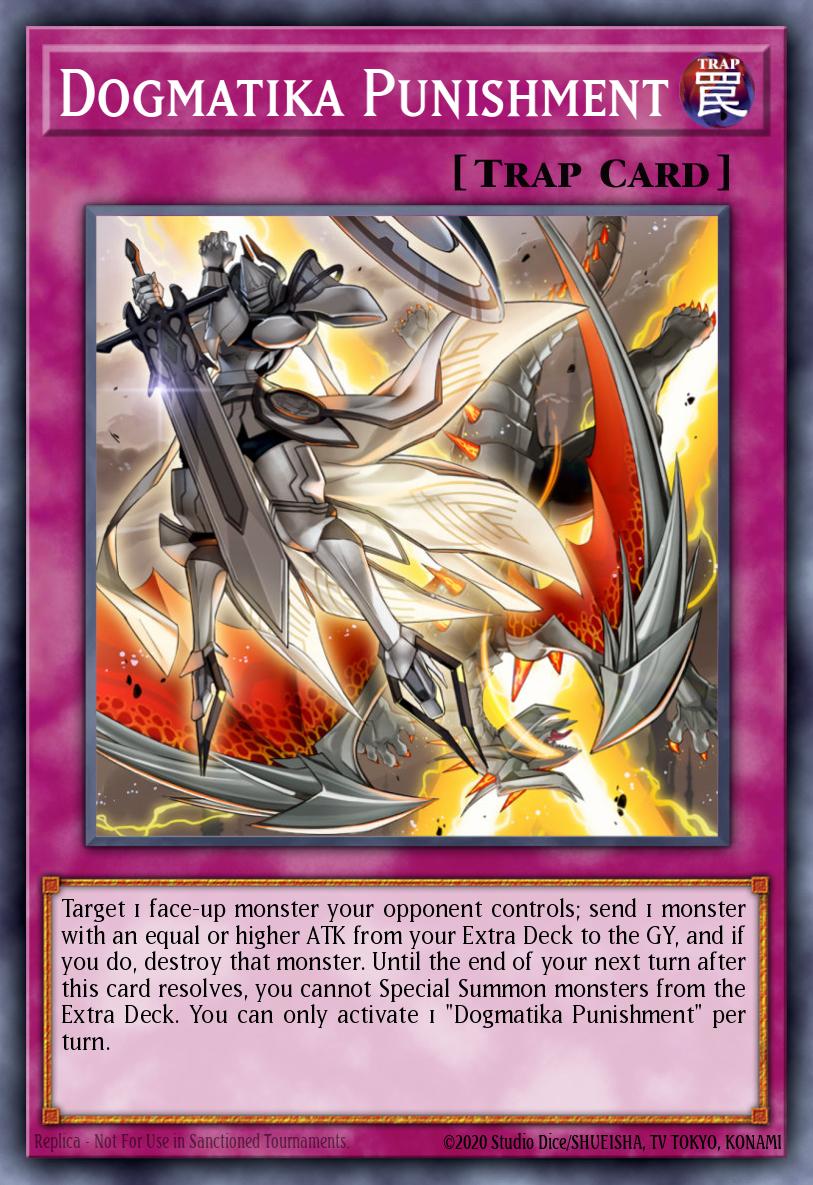
Target 1 face-up monster your opponent controls; send 1 monster with an equal or higher ATK from your Extra Deck to the GY, and if you do, destroy that monster. Until the end of your next turn after this card resolves, you cannot Special Summon monsters from the Extra Deck. You can only activate 1 "Dogmatika Punishment" per turn.
Targeting destruction removal for opponents monster, which dumps a monster from the ED.
Incredible value: solid removal, followed up by the GY effect of an ED monster. The pools of monsters to send has greatly expanded since the release of punishment, please see the dogmatika breakdown for a list of all relevant targets.
Locked out of the ED until the end of the next turn, leading to versions relying on this card barely using their ED.
Can be hard to get over Monsters with more than 3500 ATK, unless you decide to dedicate an ED slot to this niche situation
Punishment checks the ATK of the target during resolve
- If the target gets removed from the board you are unable to check the ATK, therefore you do not get to send a monster from the ED
- If the opponent increases the attack of the monster in response to punishment you might not be able to send your preferred target.
During resolve you first send your target to the GY, then attempt to destroy the opponents monster. This means this can be used on indestructible and unaffected monsters simply to dump an ED monster to the GY.
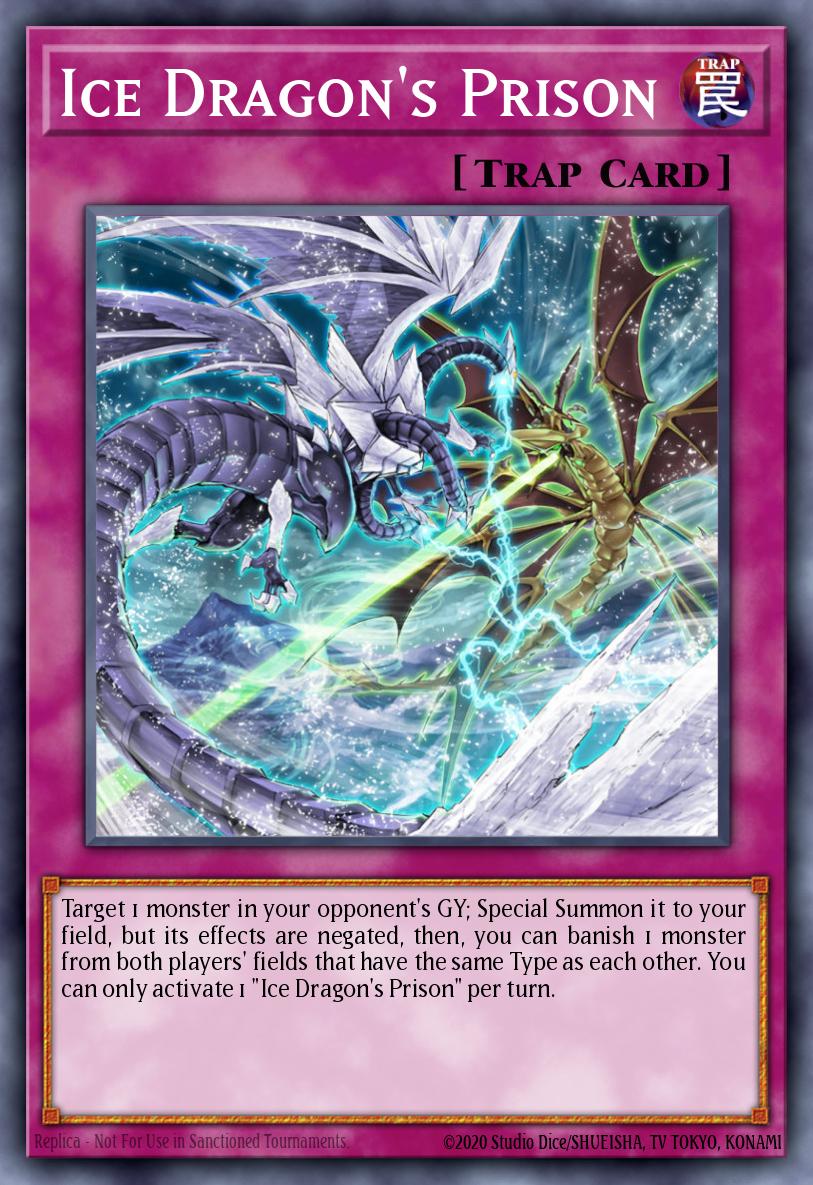
Target 1 monster in your opponent's GY; Special Summon it to your field, but its effects are negated, then, you can banish 1 monster from both players' fields that have the same Type as each other. You can only activate 1 "Ice Dragon's Prison" per turn.
Non-destruction (banish) non-targeting (on-field; targets in GY) removal for an opponent’s monster
Versatile, can be used as:
- Removal (Non-targeting banish)
- Targeting Graveyard Disrubtion
- Getting a body on board for lethal or to use as material for ED summons
Very matchup dependant, only will work as removal if your opponents deck consists of few (preferably 2 or less) types
If you use IDP as removal: You do not have to banish the monster summoned by IDPs effect, as long as the types match you can banish any pair of monsters
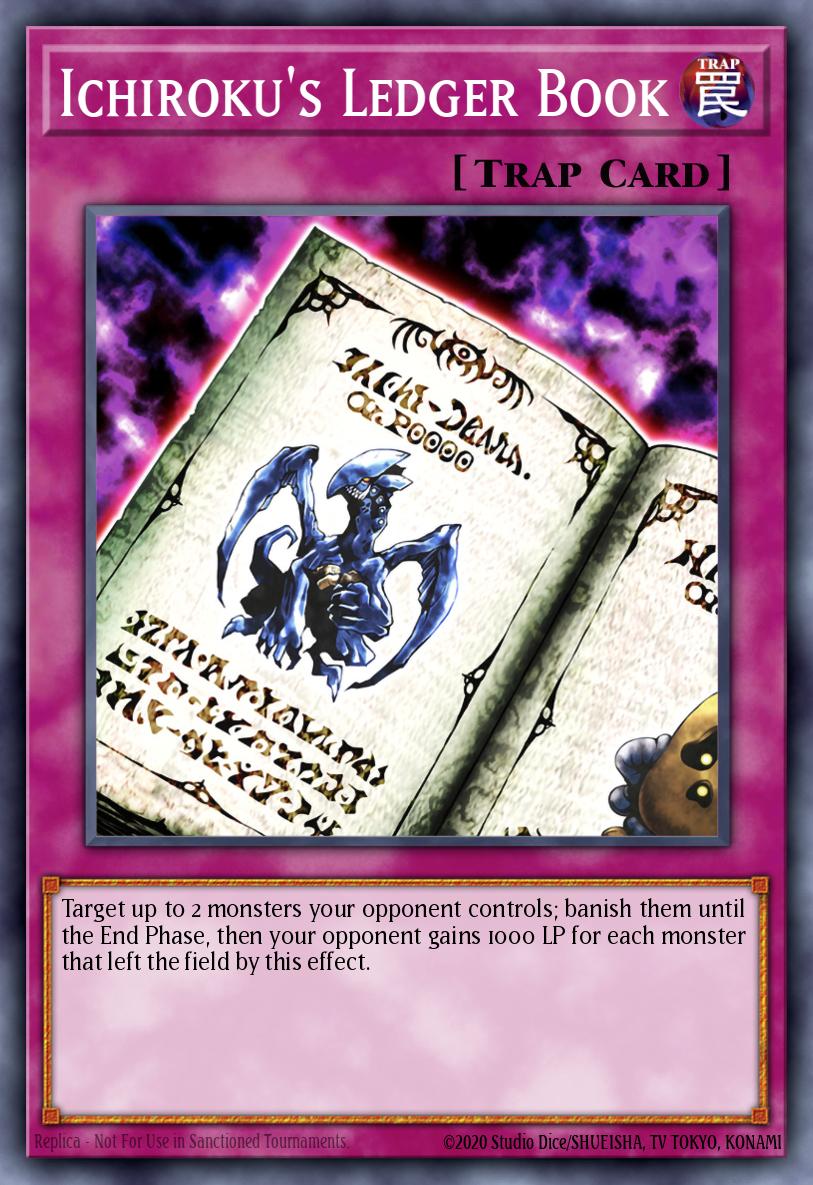
Target up to 2 monsters your opponent controls; banish them until the End Phase, then your opponent gains 1000 LP for each monster that left the field by this effect.
Targeting non-destruction (temp. banish) removal for opponents monsters
While this is only temporary removal, if used right you can banish e.g. two small bodies that are part of a combo, which aren’t hard to kill by battle in your turn, but are important for the combo
Only temporary removal, needs to be used wisely
The LP gain can make it harder to kill your opponent and is terrible for timeout
Unlike S:P Little Knight’s 2nd effect, this card can banish face-down monsters. These are banished face-down and will return face-down.
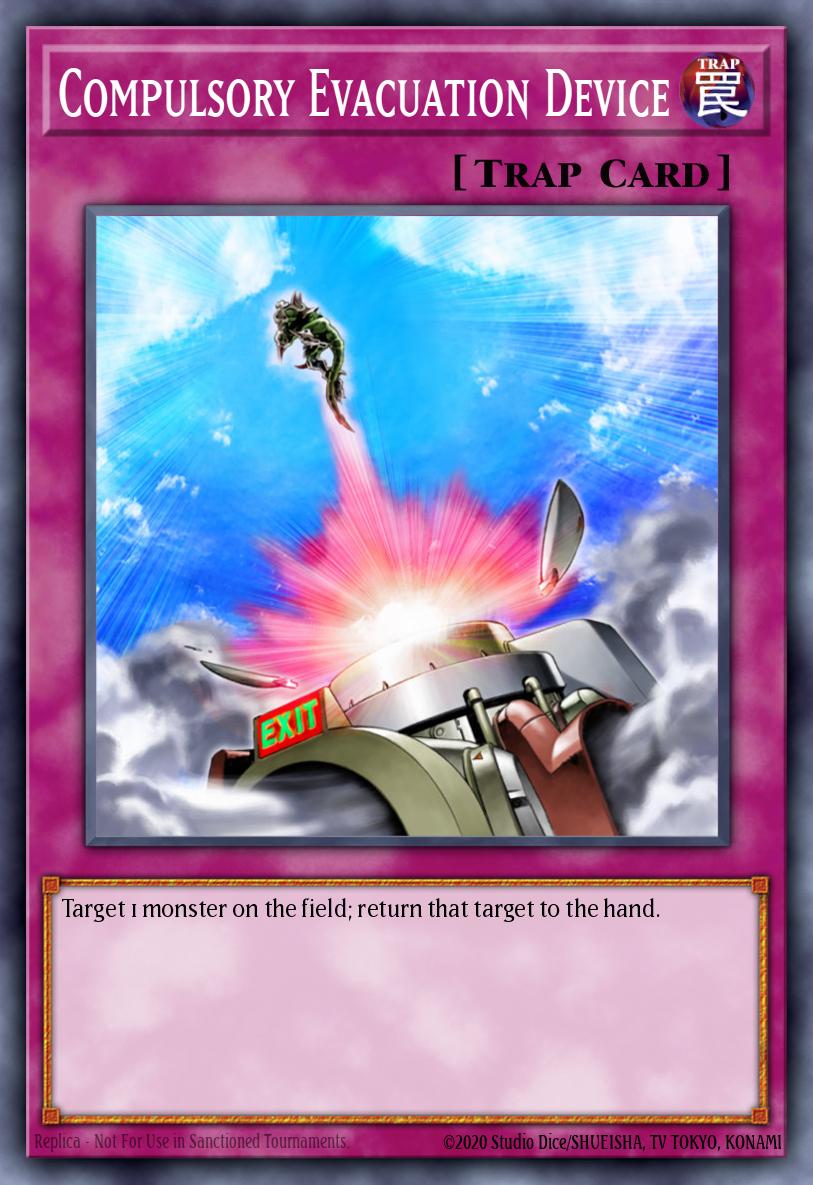
Target 1 monster on the field; return that target to the hand.
Non-destruction (bounce) targeting removal for any monster
Allows you to dodge targeting opponents effects
Allows you to play while Skill Drain is up, by bouncing your own monster in order to resolve your effect
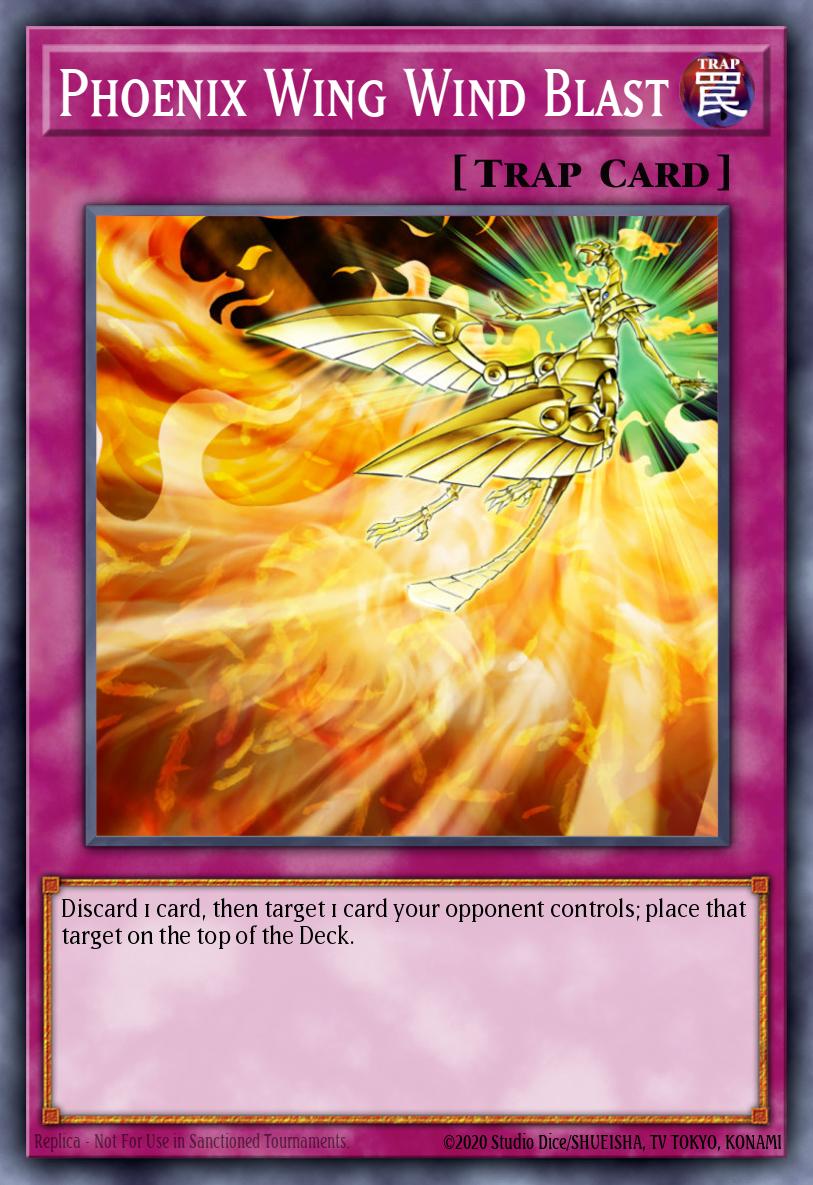
Discard 1 card, then target 1 card your opponent controls; place that target on the top of the Deck.
Non-destruction (on top of deck) targeting removal for any opponents card
Discard can be an upside, e.g. pitching Rollback or Back Jack
The only relevant trap that triggers Cooclocks GY effect
You must discard in order to activate this card. This often leads to situations where you play out your entire hand and can not activate PWWB until you get a card back in hand due to e.g. furnitures, Arianna search or a bounce from Big Welcome

If you control a Fiend monster: Target 1 card on the field; destroy it, then, you can send 1 Fiend monster from your Deck to the GY.
Destruction targeting removal for any card on field
The foolish can bring missing Furnitures/Arias into Rotation, dump Back Jack and pairs very well with Labrynth Labyrinth
You must control a fiend to activate it, aka it’s not always live and can be a TERRIBLE draw
Can be negated by Ash Blossom
The foolish combos very well with LabLab, as it in a new chain allows you to summon the foolished Fiend. There are many powerful targets such as End of Anubis, Invader of Darkness or Barrier Statue of the Abyss
Floodgates

Tribute 1 DARK monster with 2500 or more ATK, and declare 1 type of card (Spell or Trap); look at your opponent's hand, all Spells/Traps they control, and all cards they draw until the end of their 3rd turn after this card's activation, and destroy all cards of that declared type.
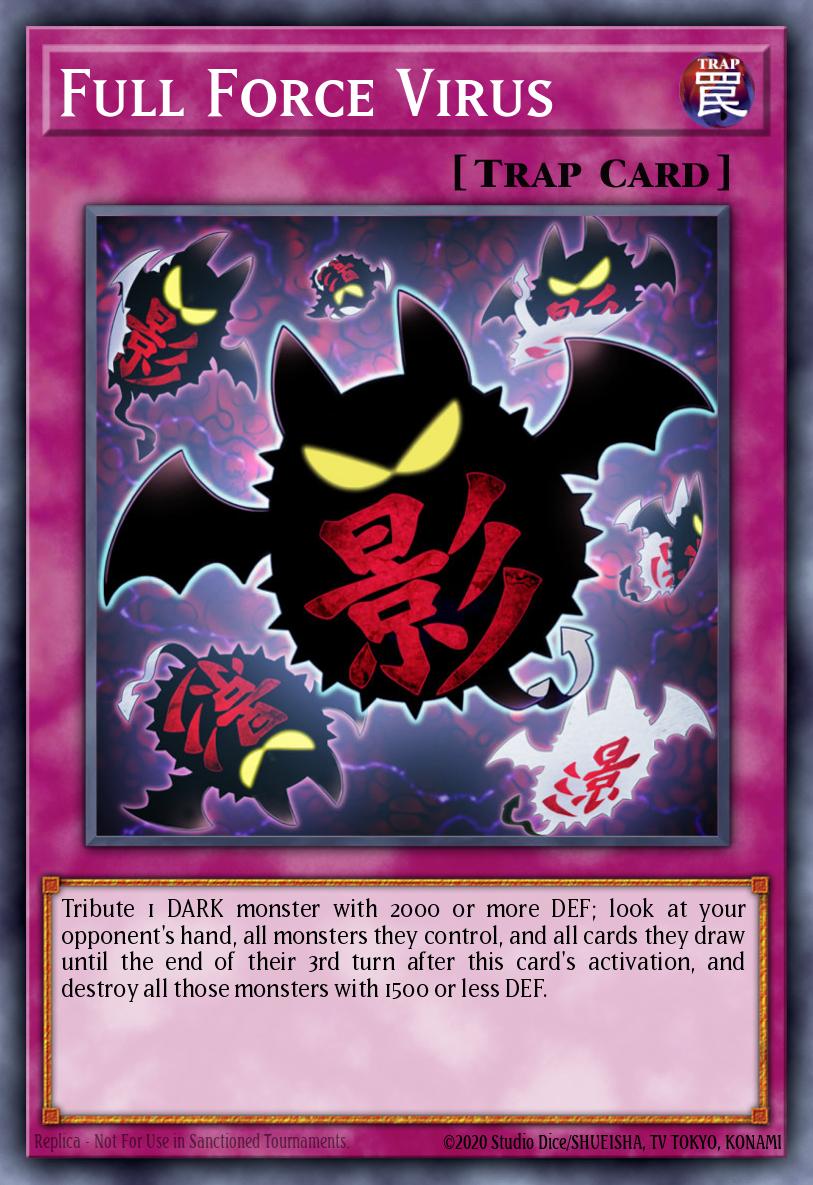
Tribute 1 DARK monster with 2000 or more DEF; look at your opponent's hand, all monsters they control, and all cards they draw until the end of their 3rd turn after this card's activation, and destroy all those monsters with 1500 or less DEF.
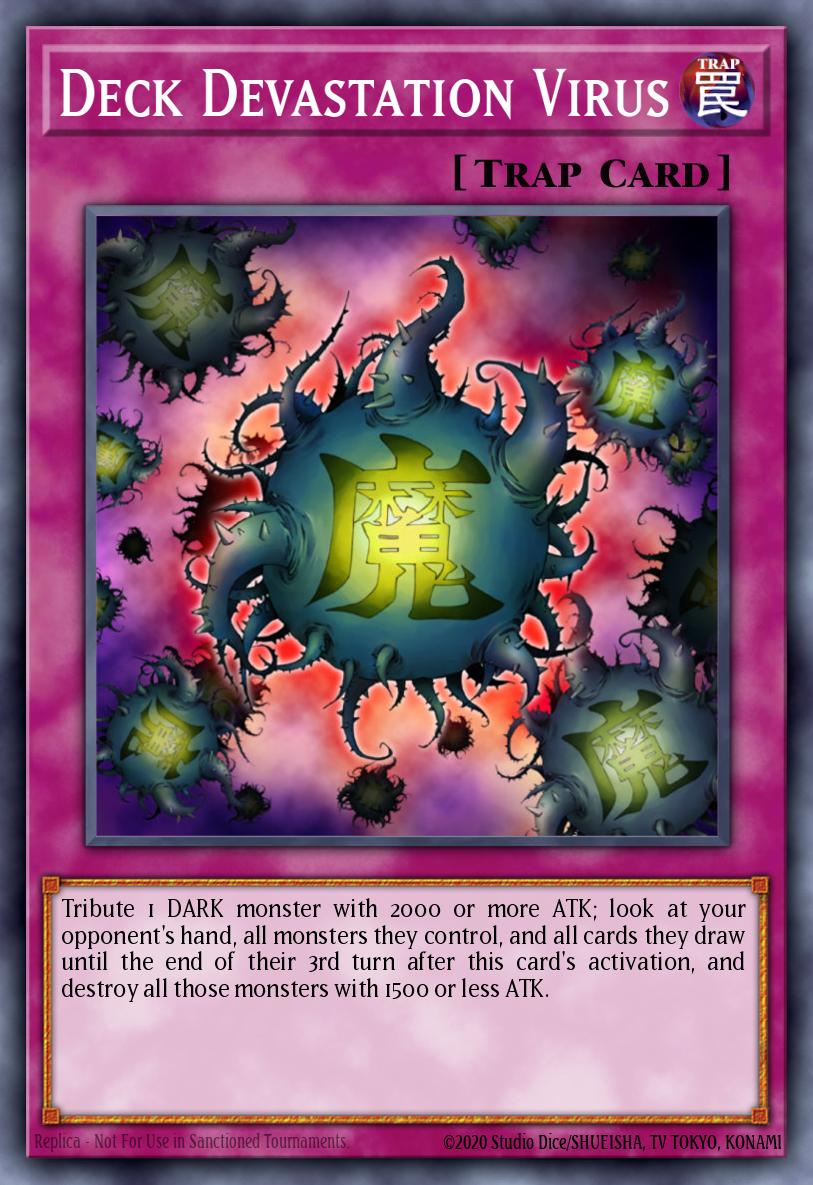
Tribute 1 DARK monster with 2000 or more ATK; look at your opponent's hand, all monsters they control, and all cards they draw until the end of their 3rd turn after this card's activation, and destroy all those monsters with 1500 or less ATK.
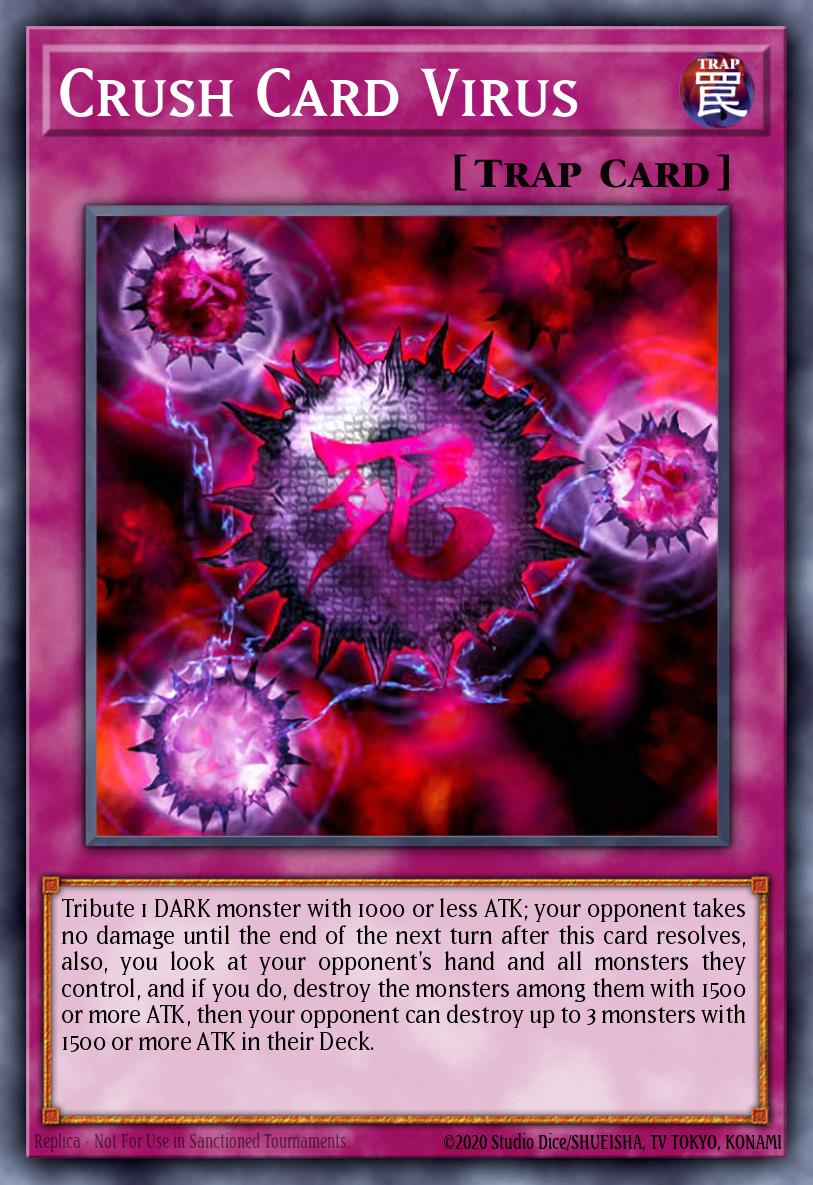
Tribute 1 DARK monster with 1000 or less ATK; your opponent takes no damage until the end of the next turn after this card resolves, also, you look at your opponent's hand and all monsters they control, and if you do, destroy the monsters among them with 1500 or more ATK, then your opponent can destroy up to 3 monsters with 1500 or more ATK in their Deck.
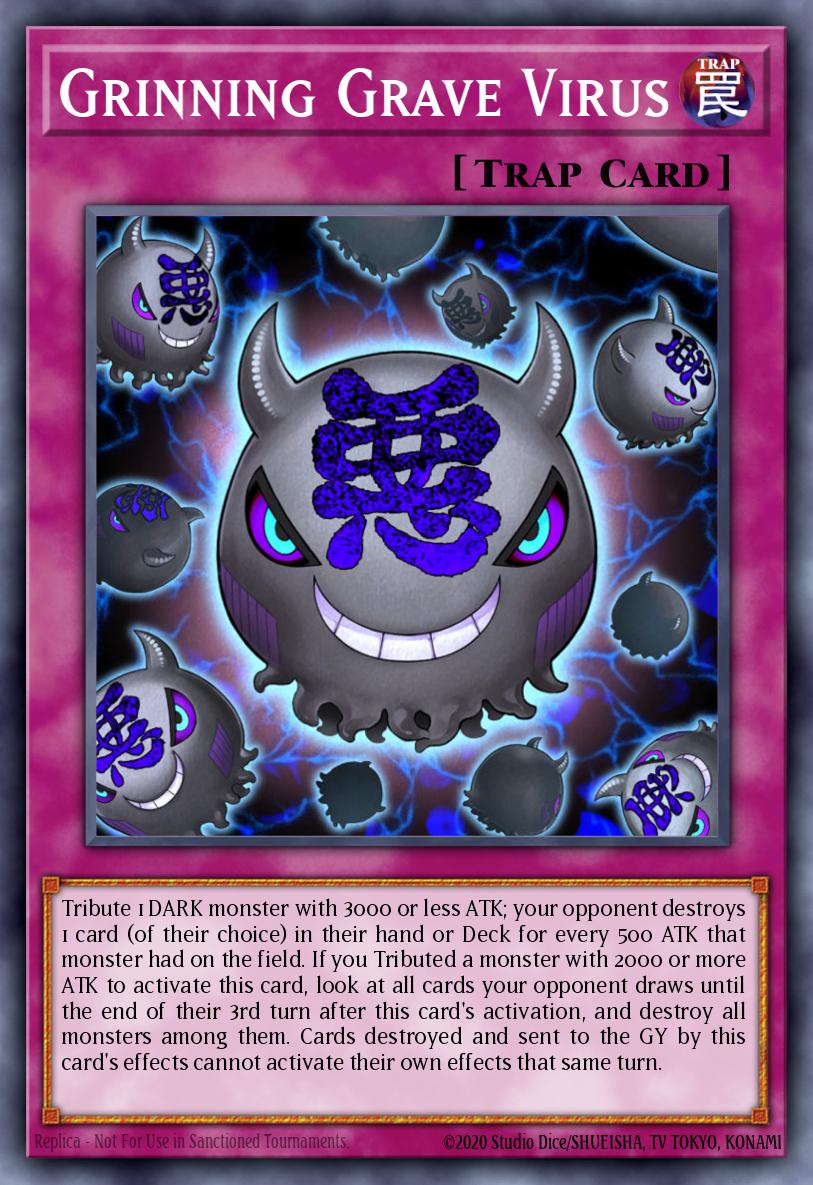
Tribute 1 DARK monster with 3000 or less ATK; your opponent destroys 1 card (of their choice) in their hand or Deck for every 500 ATK that monster had on the field. If you Tributed a monster with 2000 or more ATK to activate this card, look at all cards your opponent draws until the end of their 3rd turn after this card's activation, and destroy all monsters among them. Cards destroyed and sent to the GY by this card's effects cannot activate their own effects that same turn.
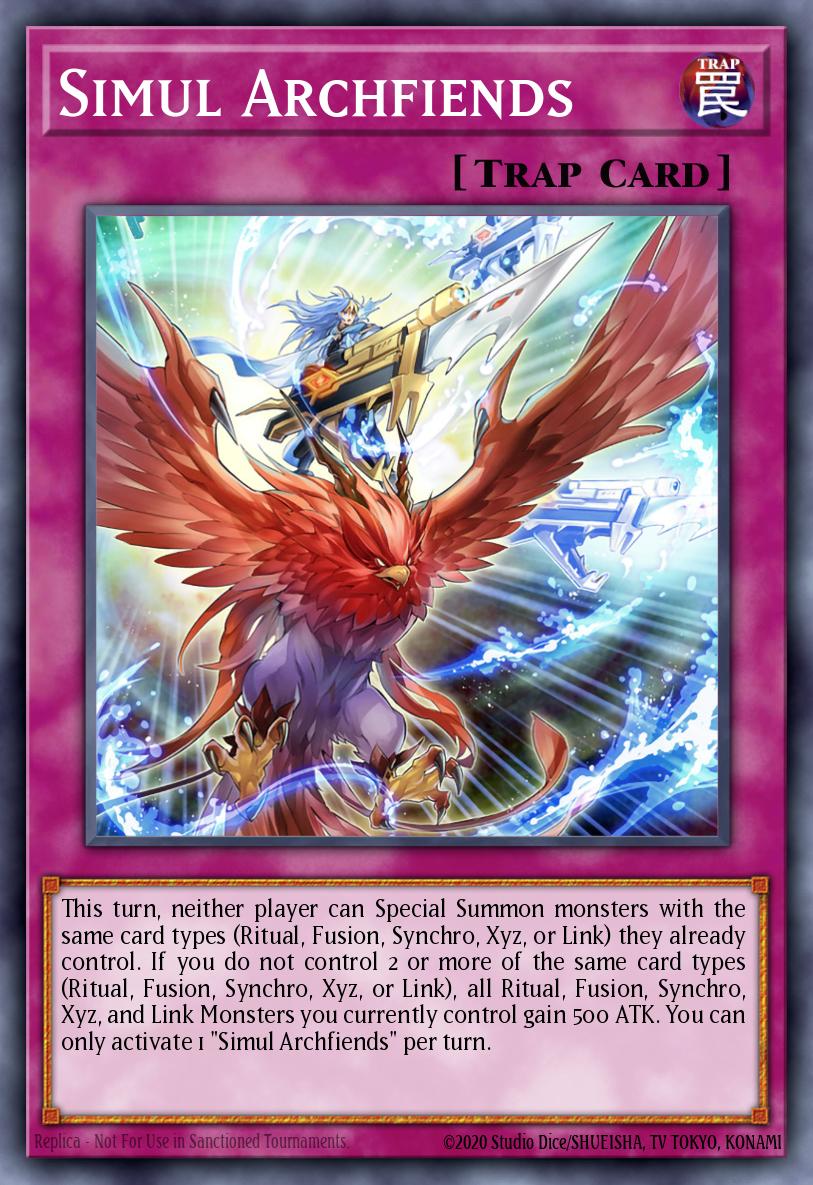
This turn, neither player can Special Summon monsters with the same card types (Ritual, Fusion, Synchro, Xyz, or Link) they already control. If you do not control 2 or more of the same card types (Ritual, Fusion, Synchro, Xyz, or Link), all Ritual, Fusion, Synchro, Xyz, and Link Monsters you currently control gain 500 ATK. You can only activate 1 "Simul Archfiends" per turn.

This turn, any monster sent to the GY is banished instead.
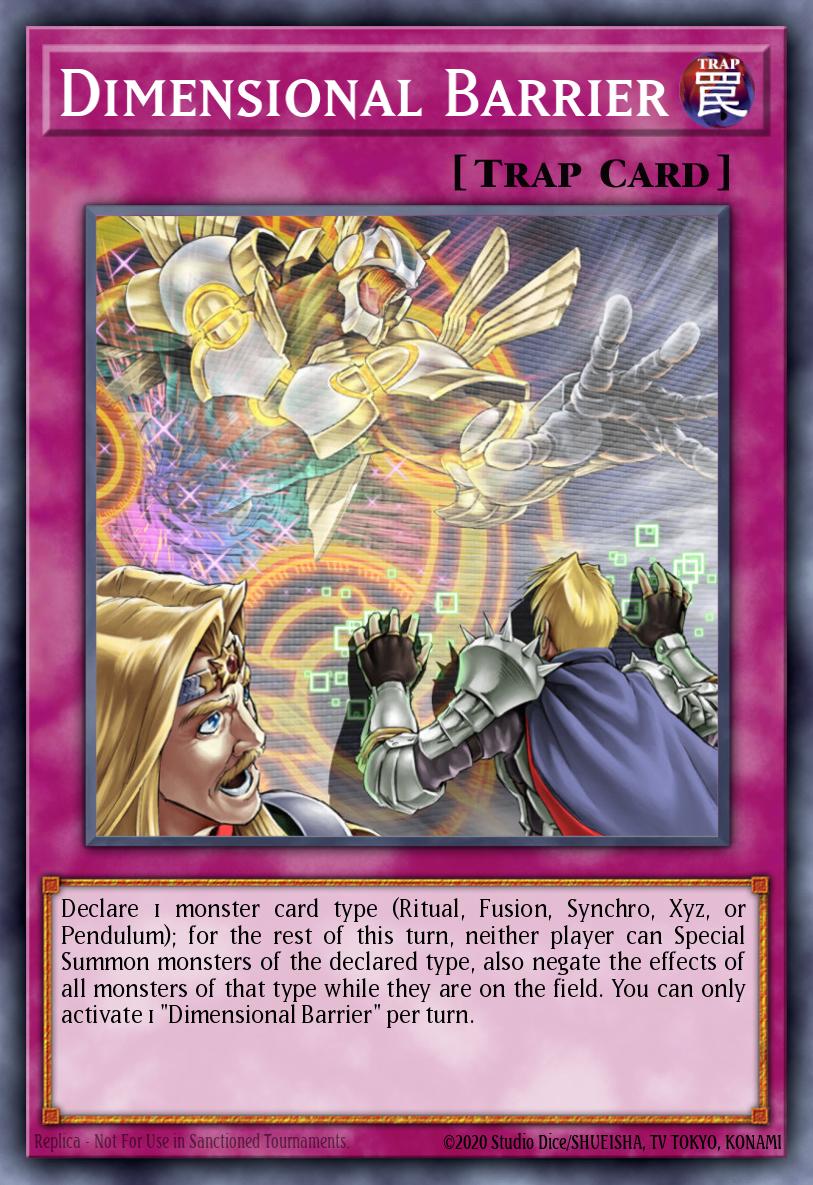
Declare 1 monster card type (Ritual, Fusion, Synchro, Xyz, or Pendulum); for the rest of this turn, neither player can Special Summon monsters of the declared type, also negate the effects of all monsters of that type while they are on the field. You can only activate 1 "Dimensional Barrier" per turn.
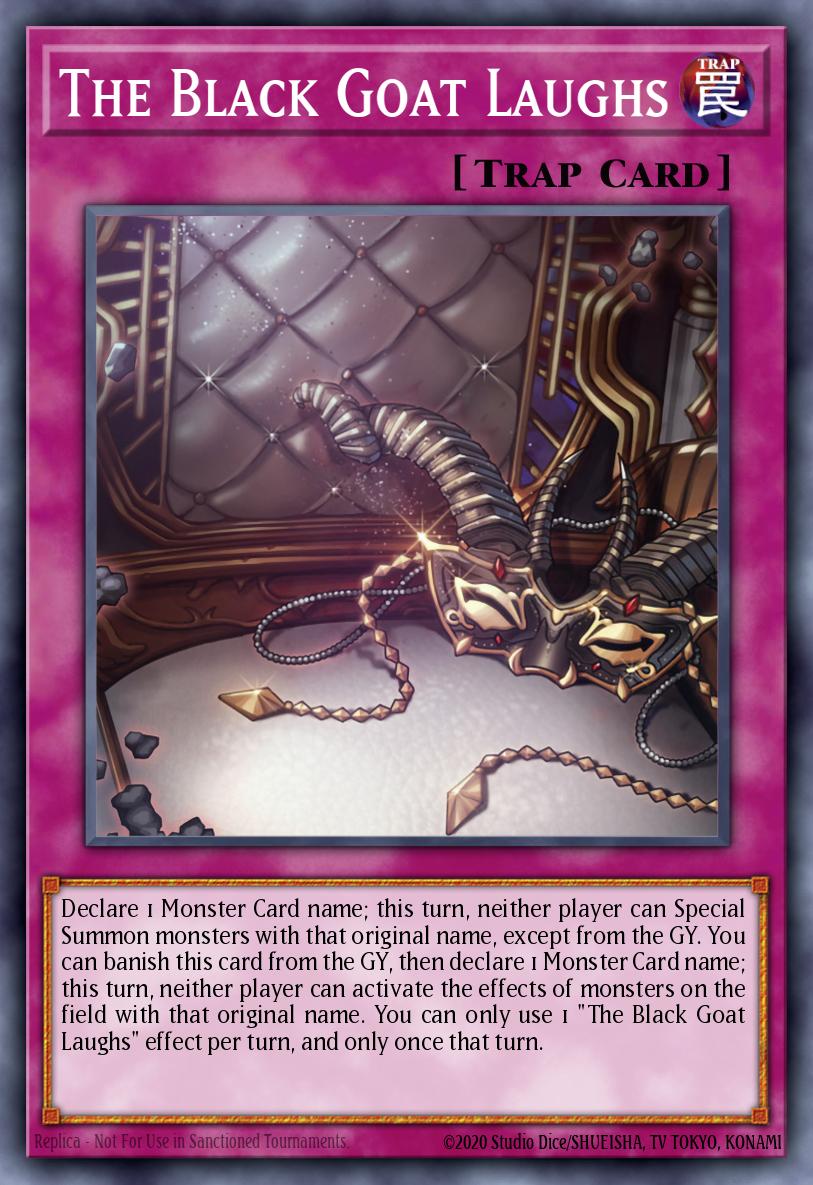
Declare 1 Monster Card name; this turn, neither player can Special Summon monsters with that original name, except from the GY. You can banish this card from the GY, then declare 1 Monster Card name; this turn, neither player can activate the effects of monsters on the field with that original name. You can only use 1 "The Black Goat Laughs" effect per turn, and only once that turn.
Miscellaneous
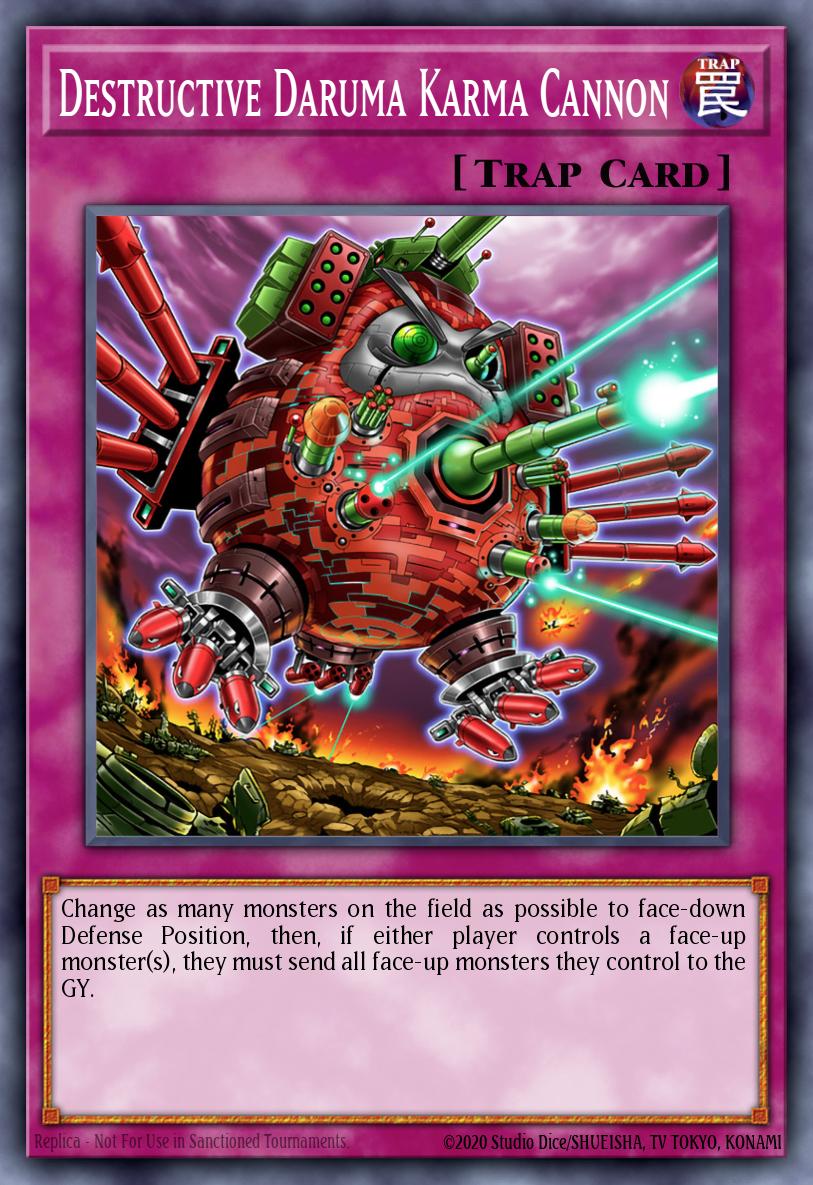
Change as many monsters on the field as possible to face-down Defense Position, then, if either player controls a face-up monster(s), they must send all face-up monsters they control to the GY.
Forces a player action just like Evenly Matched, things do not send to the graveyard by card effects.
The best, and only, out for unaffected monsters for Labrynth. Also outs tokens and link monsters.
Easily buys you one more turn by booking everything during the Battle Phase.
At least one bookable monster needs to be face-up during the activation and resolve.
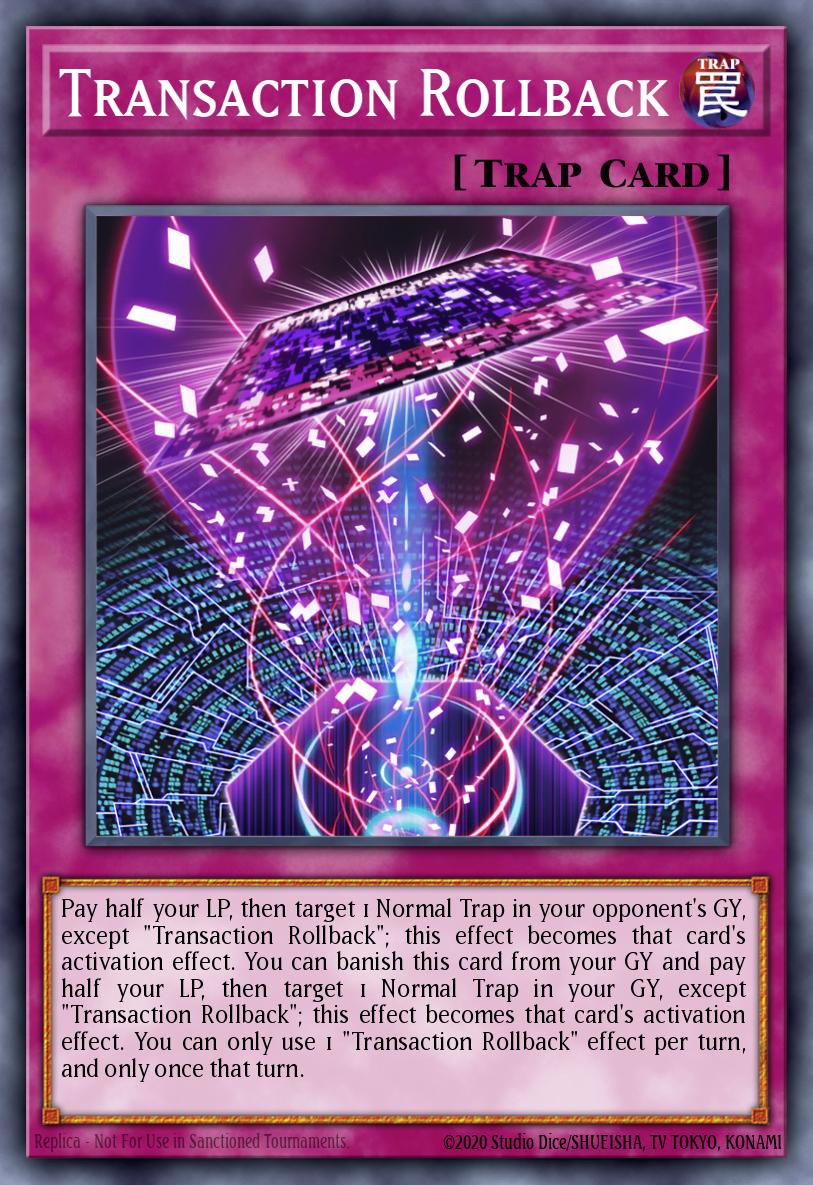
Pay half your LP, then target 1 Normal Trap in your opponent's GY, except "Transaction Rollback"; this effect becomes that card's activation effect. You can banish this card from your GY and pay half your LP, then target 1 Normal Trap in your GY, except "Transaction Rollback"; this effect becomes that card's activation effect. You can only use 1 "Transaction Rollback" effect per turn, and only once that turn.
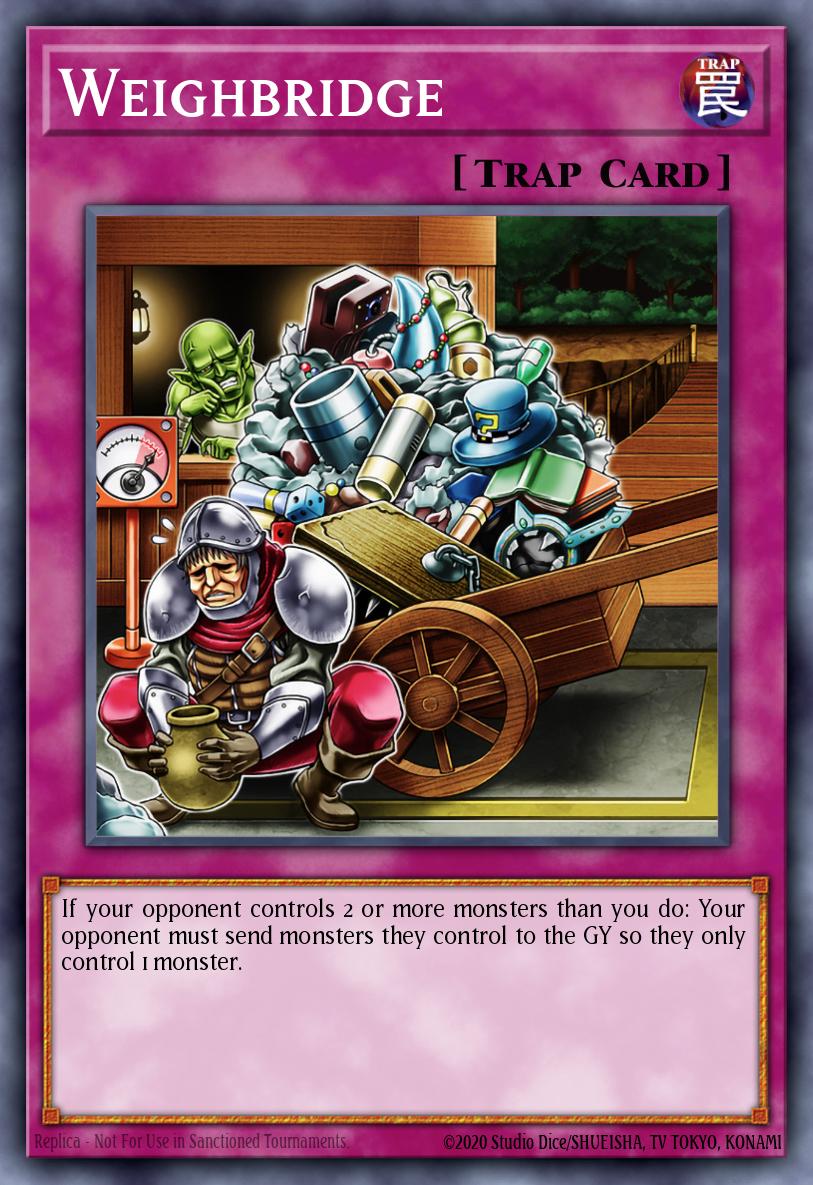
If your opponent controls 2 or more monsters than you do: Your opponent must send monsters they control to the GY so they only control 1 monster.
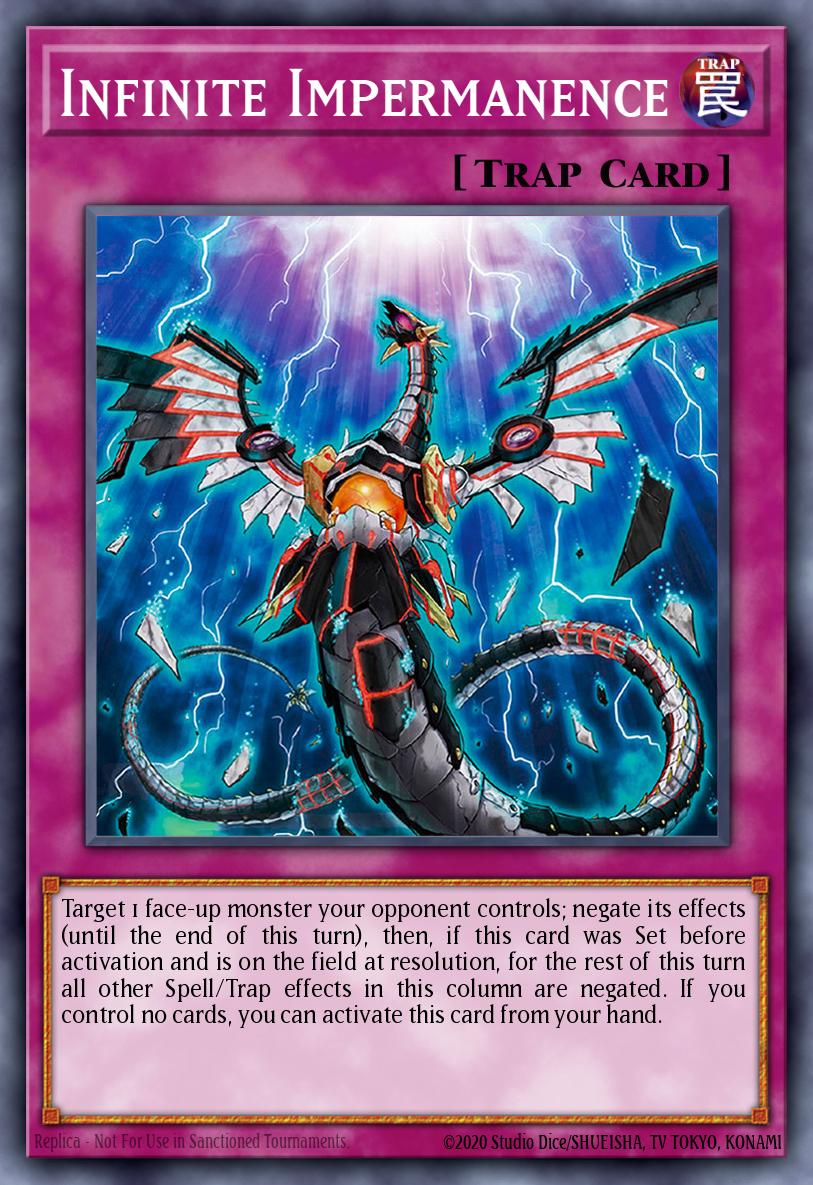
Target 1 face-up monster your opponent controls; negate its effects (until the end of this turn), then, if this card was Set before activation and is on the field at resolution, for the rest of this turn all other Spell/Trap effects in this column are negated. If you control no cards, you can activate this card from your hand.
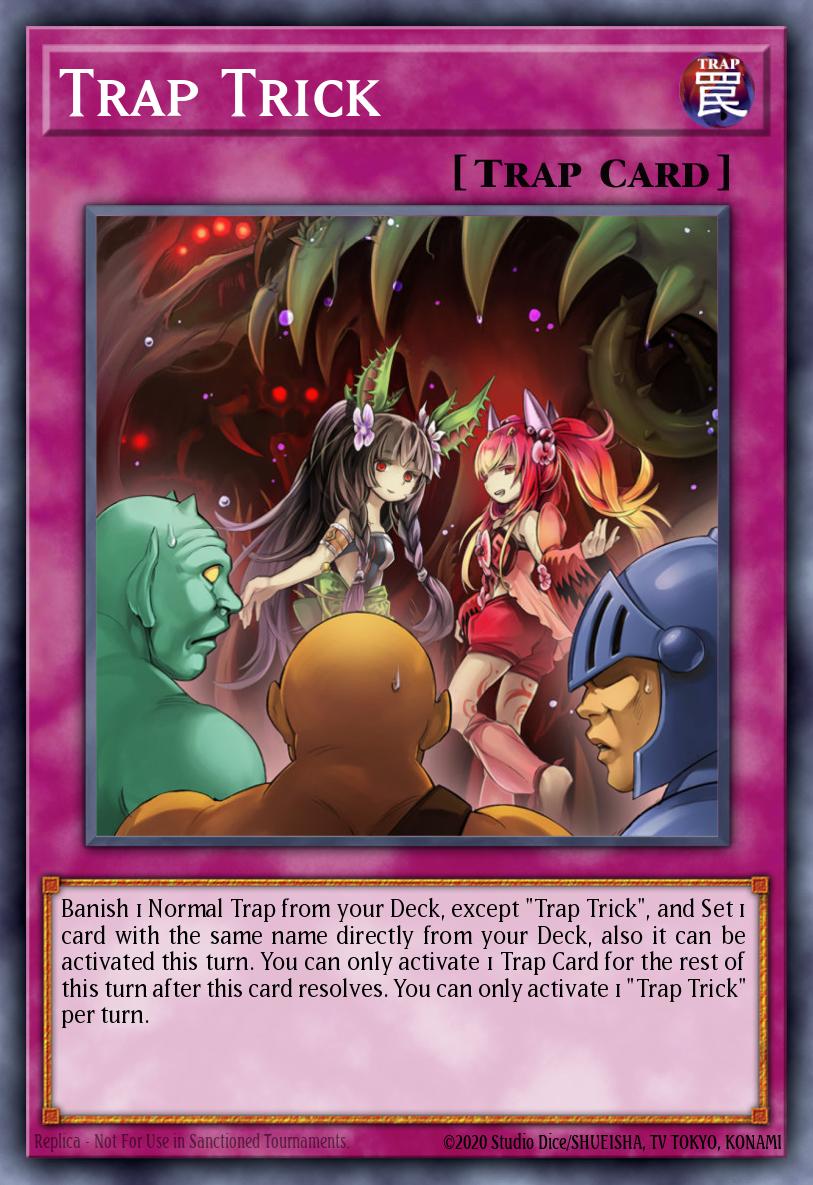
Banish 1 Normal Trap from your Deck, except "Trap Trick", and Set 1 card with the same name directly from your Deck, also it can be activated this turn. You can only activate 1 Trap Card for the rest of this turn after this card resolves. You can only activate 1 "Trap Trick" per turn.
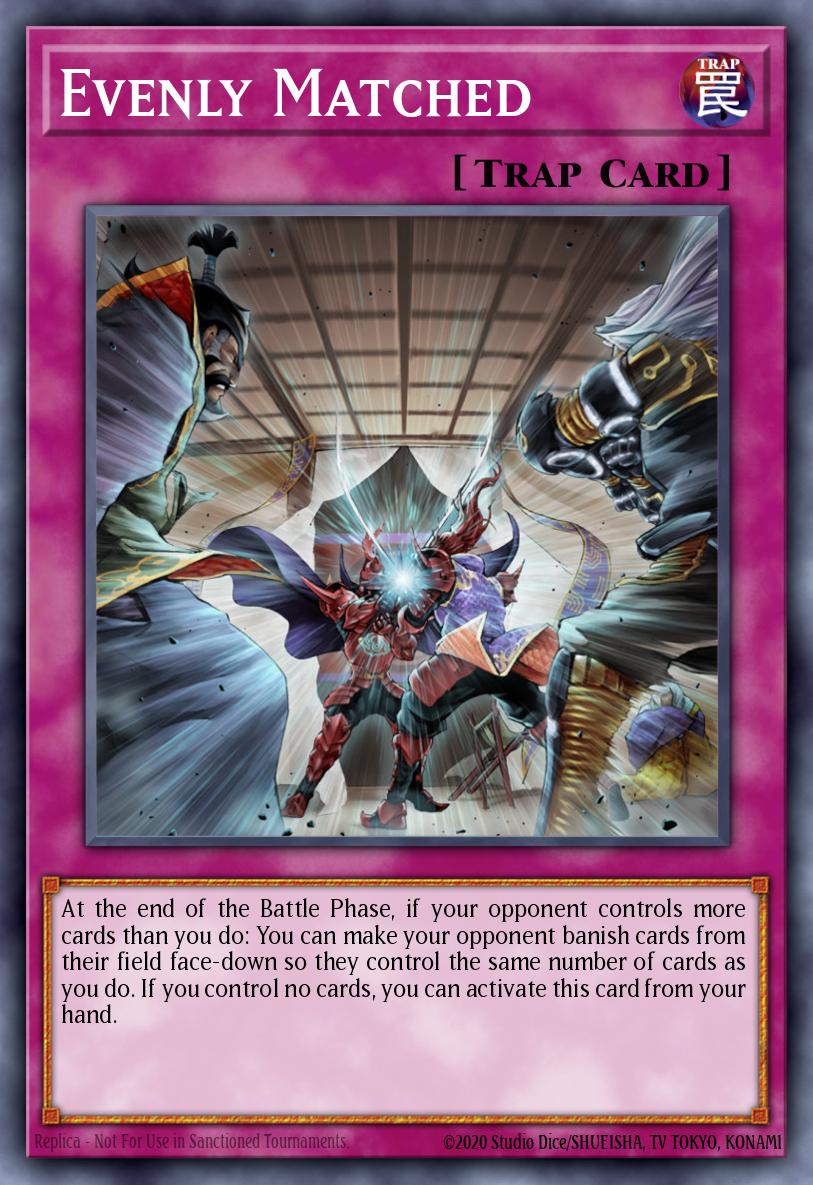
At the end of the Battle Phase, if your opponent controls more cards than you do: You can make your opponent banish cards from their field face-down so they control the same number of cards as you do. If you control no cards, you can activate this card from your hand.
